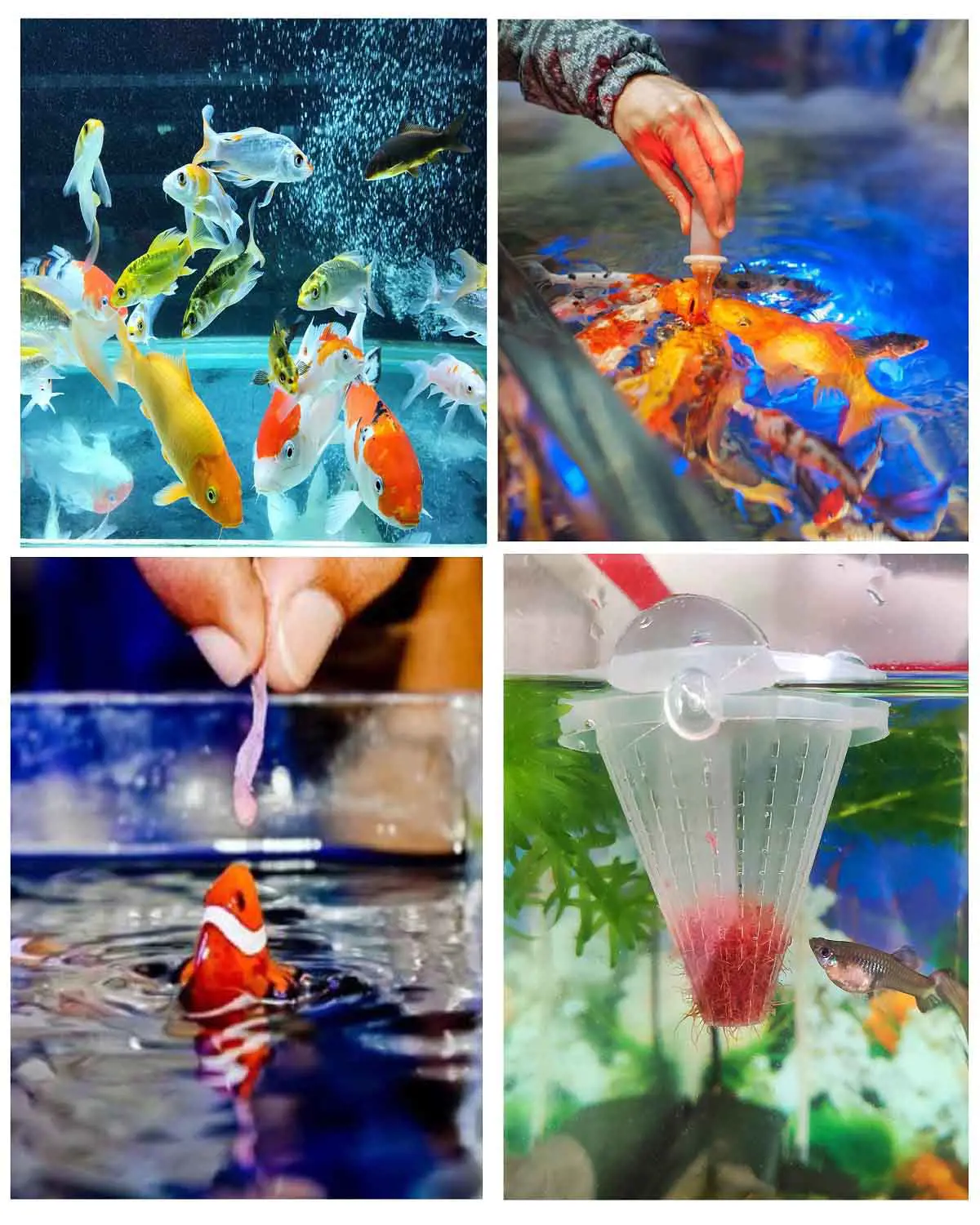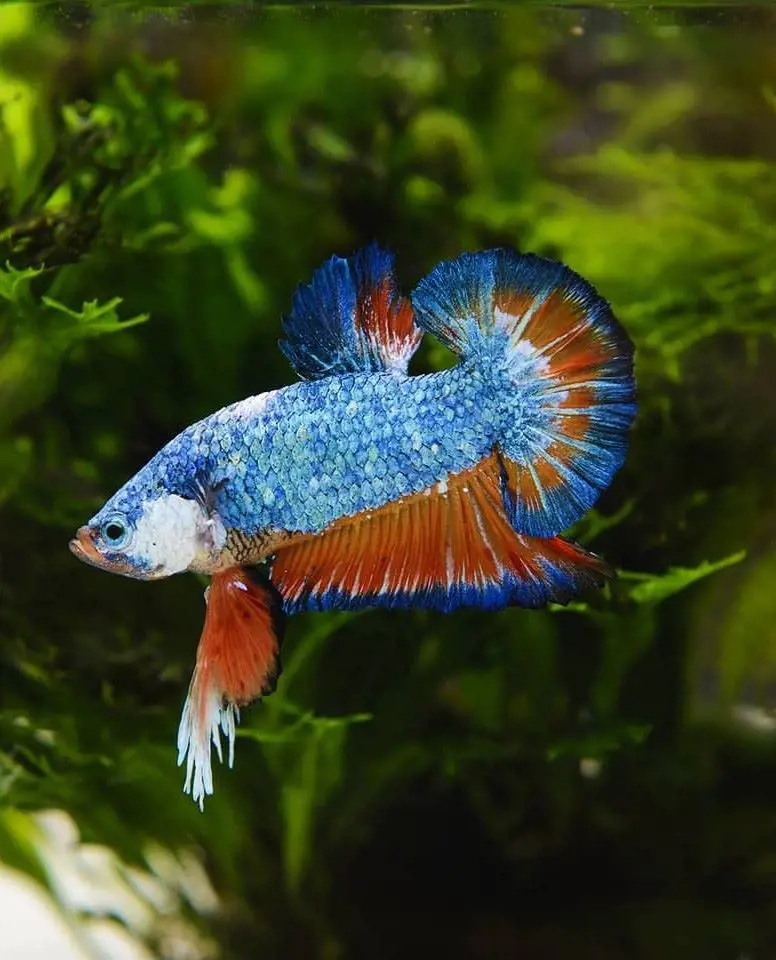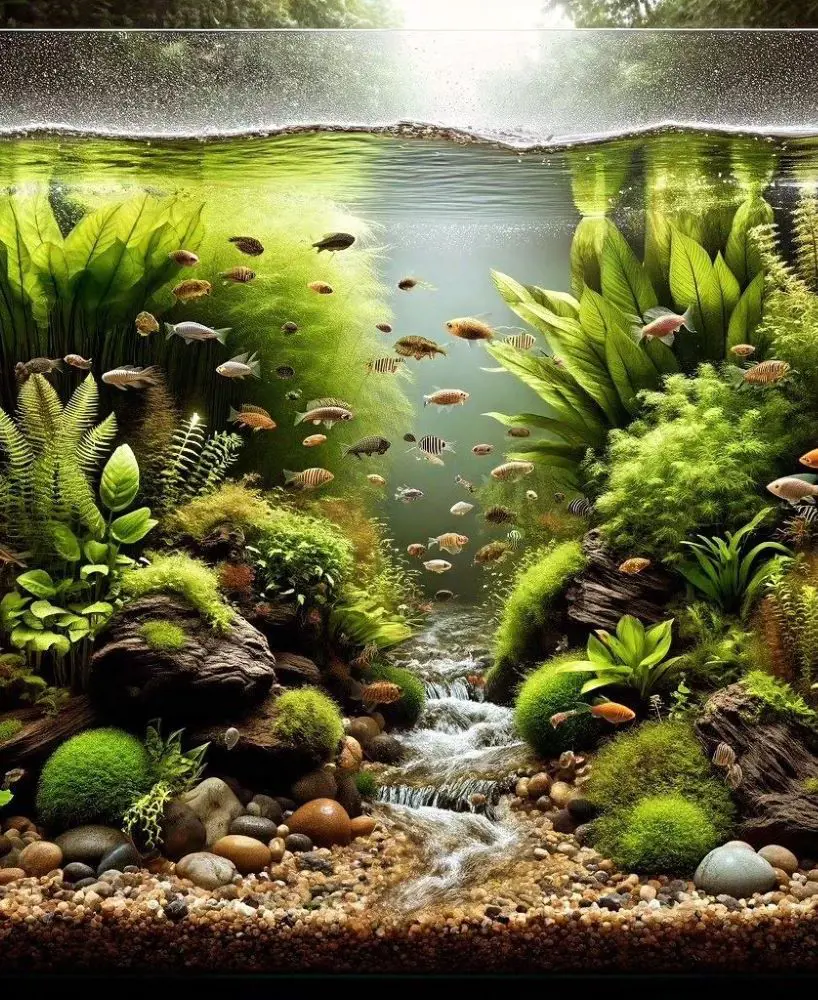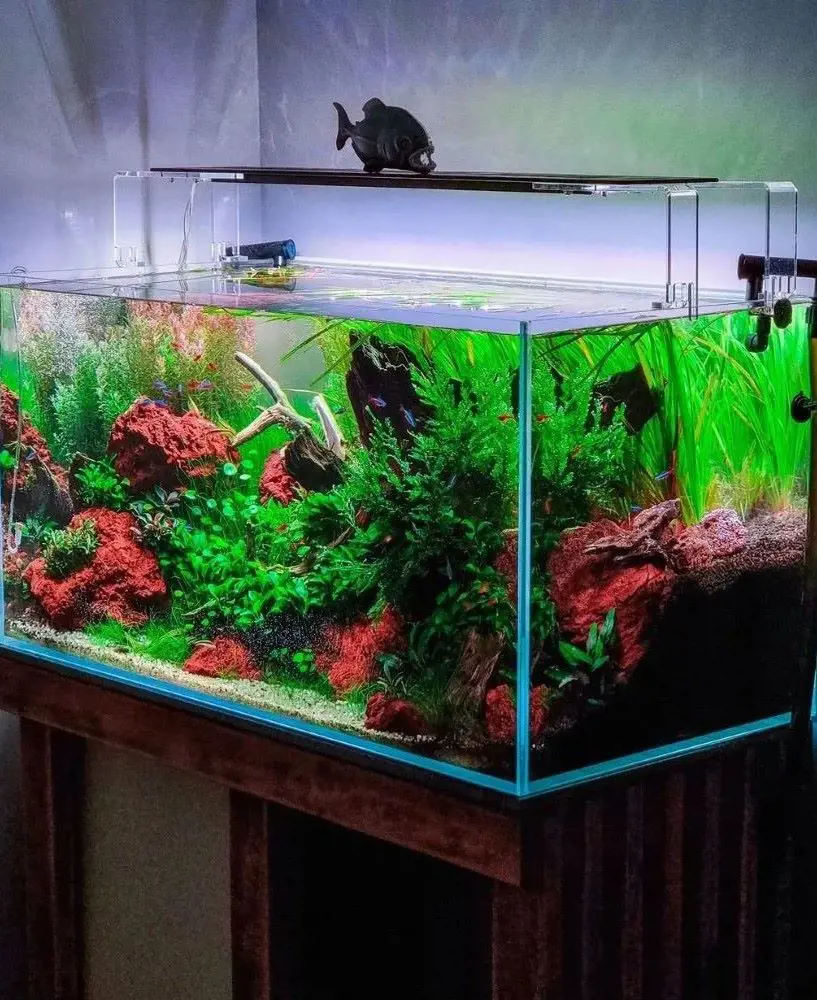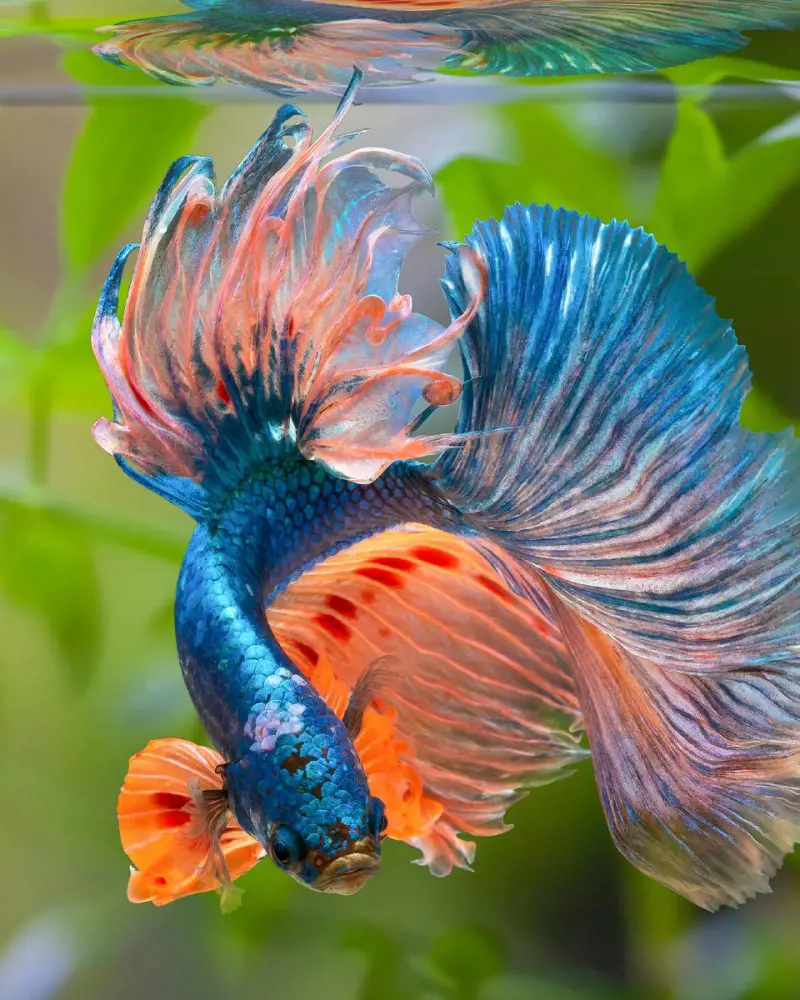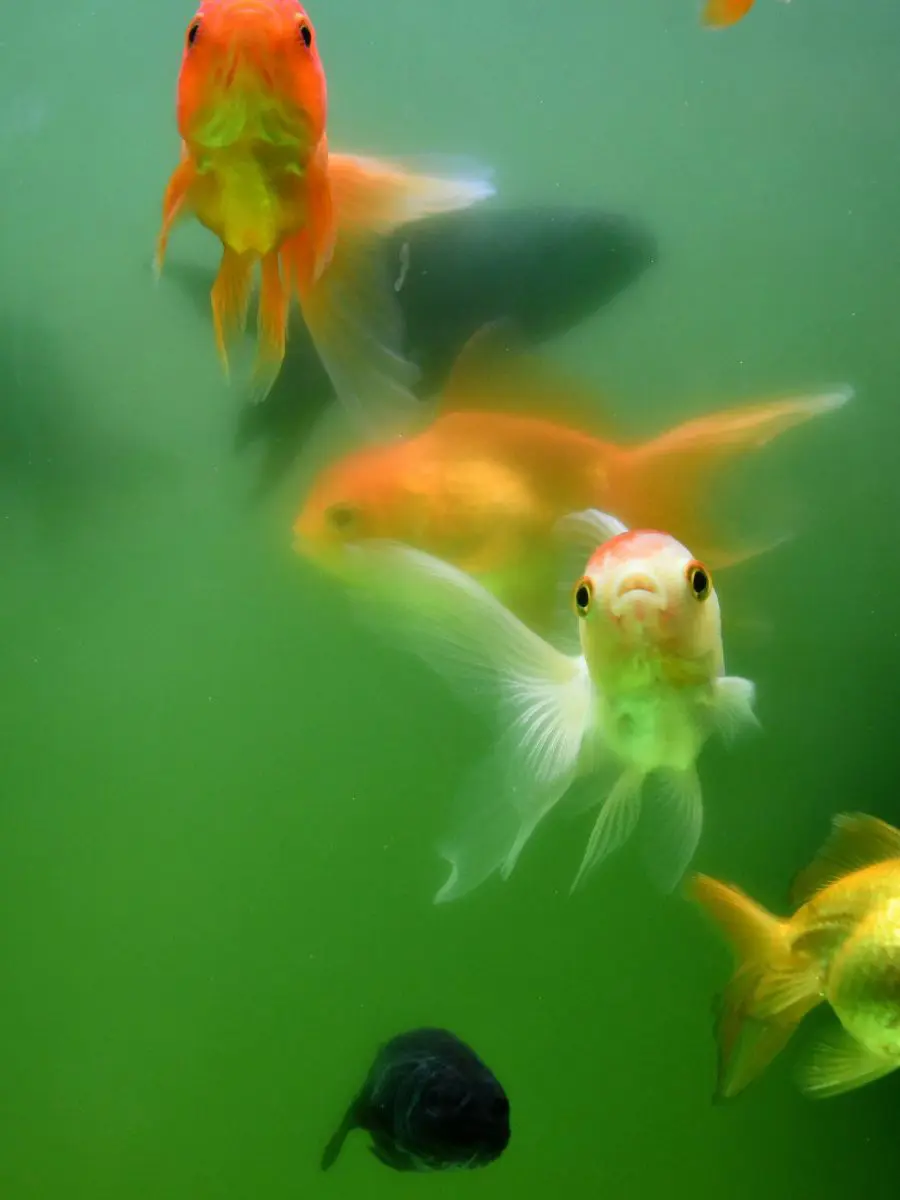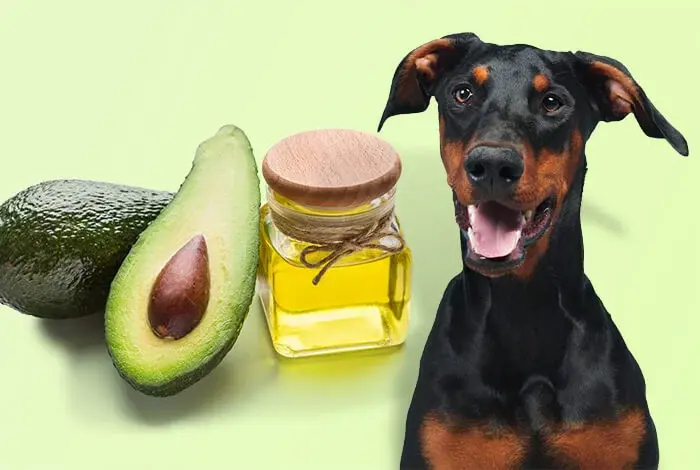Parrot Fish Care Guide And Tank Mates
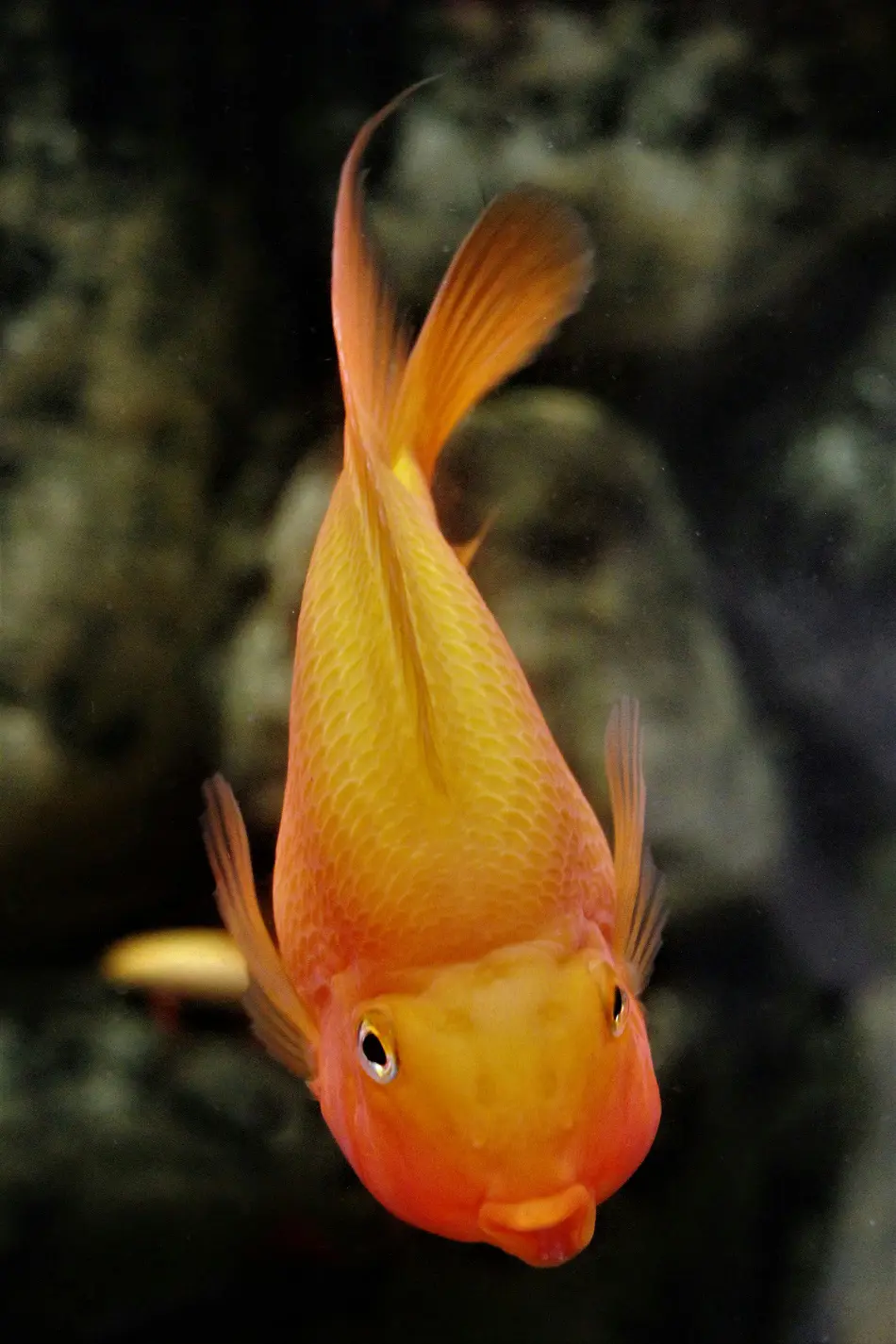
Parrotfish are colorful reef-dwelling fish named for their parrot-like beaks, which they use to feed on algae. These fascinating creatures play a vital role in maintaining the health of coral reefs by preventing algae overgrowth.
Though appreciated for their beauty, with some knowledge of these animals and a proper care guide in place you can keep them comfortably alive at home. This beginner's to advanced aquarist guide will provide a general overview of what pearl scale fish care entails, as well as some advice in choosing the best tank mates for this popular, fascinating species.
Ideal Tank Setup
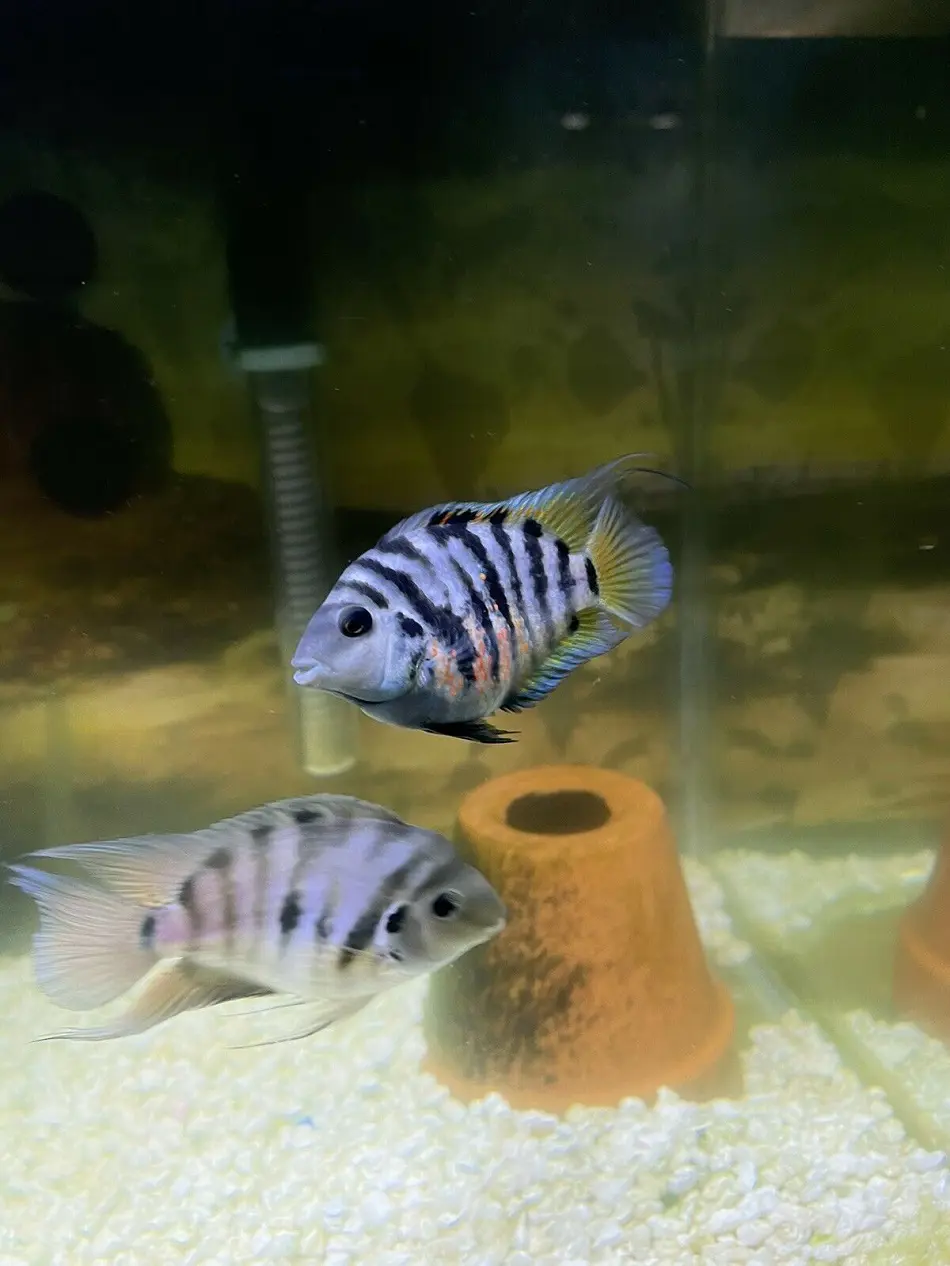
Understanding the individual requirements of these fish is very important and will mean that they can be cared for in a way that promotes health, well-being, and longevity. What to do next:
Tank Size
At least 30 gallons or bigger tanks are always better as they give more swimming room and help with the possibility that parrot fish can develop too and more room means less stress and more natural behavior.
If you are shopping for a tank, then go long rectangular, and not tall or narrow when it comes to choosing your tank. Choose a long rectangular for the parrot fish to get sufficient swimming space for your parrot cichlid.
Water Parameters
- Temperature: 76-80°F (24-27 °C)
- pH Level: 6.5–7
- Hardness: 6-8 dGH
These water parameters are important to maintain as they are important for maintaining the overall well-being of the parrot fish.
Consistent monitoring with appropriate methods is important to maintain the parameter at the required points. Maintaining water parameters boosts the natural behavior of the fish which is beneficial for them.
Filtration and Aeration
Several layers of mechanical and biological strong filtration systems may help to clean the tank in which parrot fish, also known as messy eaters reside. It is important to make the tank clean and toxin-free for the healthy living of the fish in the tank.
It is essential to maintain oxygen levels through proper aeration and good water circulation. An air pump or even placing the filter output at the surface of the water can also help to get a nice ripple. Proper aeration also prevents oxygen depletion and gives each fish the ability to swim around their new dynamic atmosphere just like they are used to.
Substrate and Decor
For the best substrate, go for a soft, sandy sort. Not only that, this choice is fairly mouth-friendly, to the digging species, parrot fish! A soft substrate also just looks better than smooth shiny glass for that complete-appearance forest aesthetic.
It is important to increase stress and provide a hiding place that allows parrot fish to show their natural behavior. Add rocks, caves, and plants to the tank. These natural touch-points not only bring great visual aesthetics but also give areas for fish to withdraw, explore, and gain that sense of security.
Lighting and Plant Life
While these fish do not require any extensive lighting, it is always a good idea to maintain their circadian rhythms like the cycle of day and night. Using timers to give them moderate and consistent lighting will help them to regulate their behavior and stress levels.
If you add live plants to your tank it will be beneficial in helping with water quality as they naturally filter the water and offer places for fish to hide. Any combination of Anubias, Java Fern, and Amazon Swords would be good as all these plants can survive the same type of environment that they have for parrot fish. Plants must be securely anchored or attached to decor so the fish won't uproot them.
Dietary Requirements
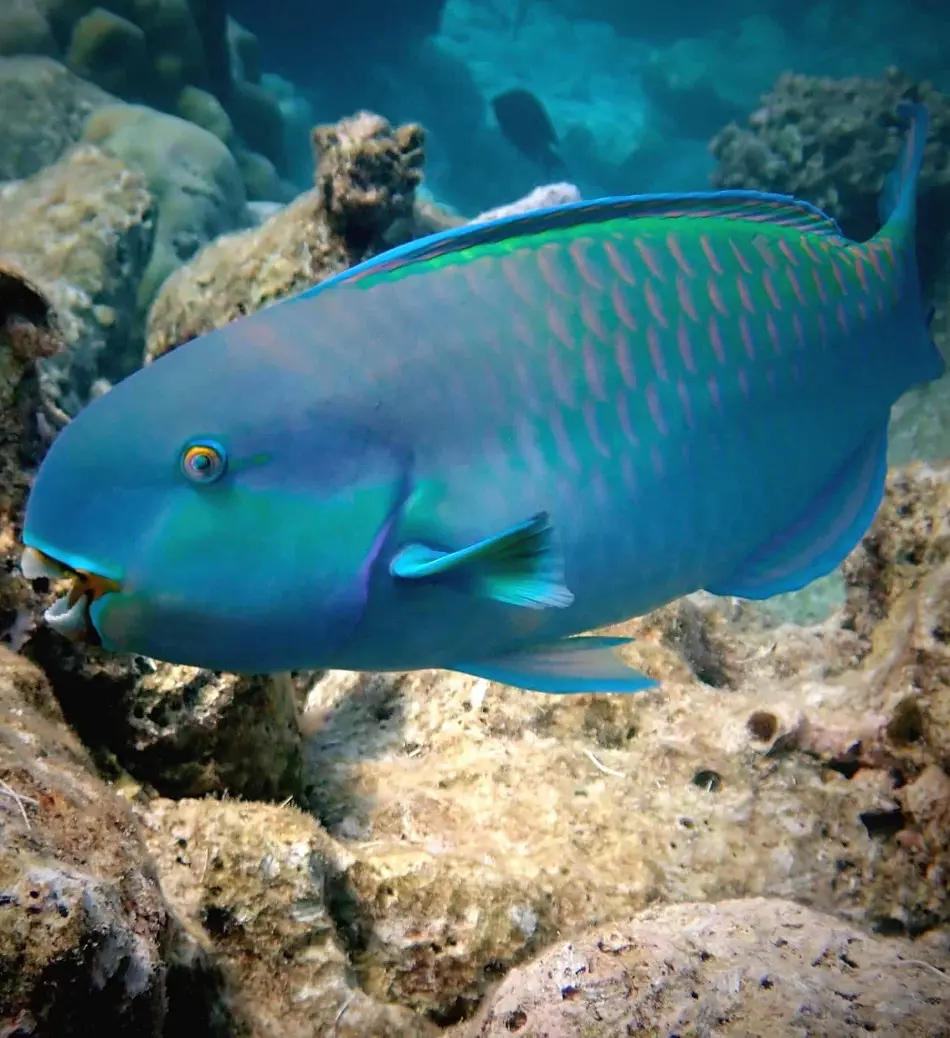
As omnivores, the diet of the parrot fish is very specific to keep them healthy and colorful. These may include a staple diet, vegetables, and treats.
Pellets and Flakes
Feed high-quality flakes and pellets that have ingredients from meat meals or other quality protein sources, as a staple diet to parrot fish. They are designed to provide important vitamins, minerals, and protein to meet nutritional demands.
The pellets or flakes must be big enough for the fish to eat. Smaller pellets are perfect for younger fish or smaller species and larger pellets will work for fully grown parrot fish.
Supplementary Foods
So importing fresh and frozen, you add some protein in there, which is something your fish need to grow on and color up well. Bloodworms, brine shrimp, and daphnia are good choices.
Rotate through the different supplemental foods that your fish are used to so they get a variety and keep their interest in feeding on the flake food.
Blanched Vegetables
Blanched veggies provide a veggie flush diet which helps in flushing out toxins from the fish's body thereby keeping them fit and healthy. Spinach, zucchini, and other leafy greens. Blanching the vegetables makes them more digestible and a bit prettier.
Feed vegetables once or twice a week. Make certain they are reduced to small, workable bites, so regarding protection against choking or taking in challenges.
Treats
Provide treatment and encourage instinctive foraging behaviors, which include dried or frozen worms or insects. You should provide them with a treat once or twice a week.
Treats should be a small portion of the overall staple diet, not more than 4%. It should complement the fish's regular meal and support additional nutrients.
Ideal Tank Mates for Parrot Fish
Making the right decision on compatible parrot fish tank mates is essential to keep your community tank peaceful and thriving. Parrot fish are so unique, and have such particular water needs as well as being social creatures to specific species of reef companions. But knowing what fish can be safely kept with parrotfish will help ensure a peaceful aquarium.
Compatible Species
Silver Dollar Fish
A group of these peaceful, schooling fish is perfect to put with parrot fish since they are friendly. Both fish also do well in a comparable water requirement, requiring slightly acidic to neutral pH levels and moderate temperatures.
The Silver Dollar Fish is good as a fast swimmer, so it can easily coexist with Parrot Fish without getting harmed by their aggressive behavior due to its speed and size
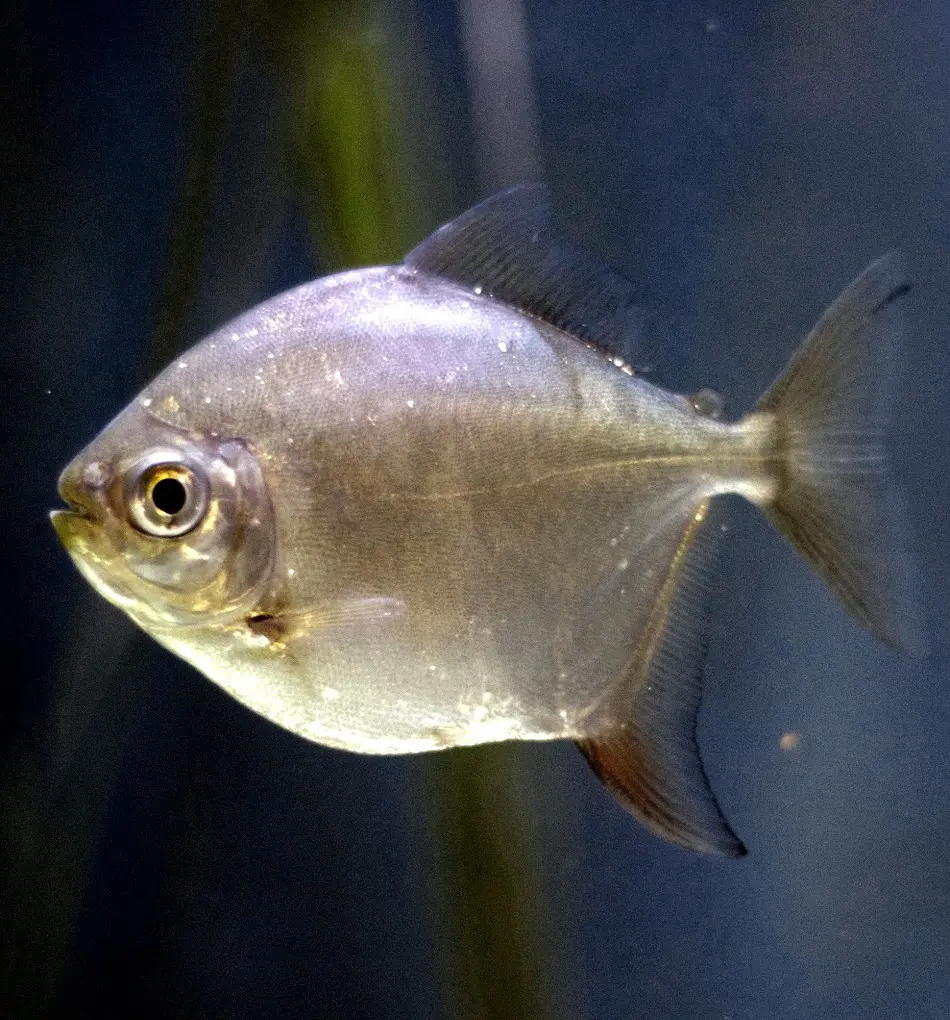
Angelfish
Angelfish are slow swimmers and have a reputation for being generally peaceful fish. Parrotfish can be social in larger tanks, they are not as pushy and are less likely to get into scrapes. The tank must be large enough to accommodate both species and should provide ample territory for the fish.
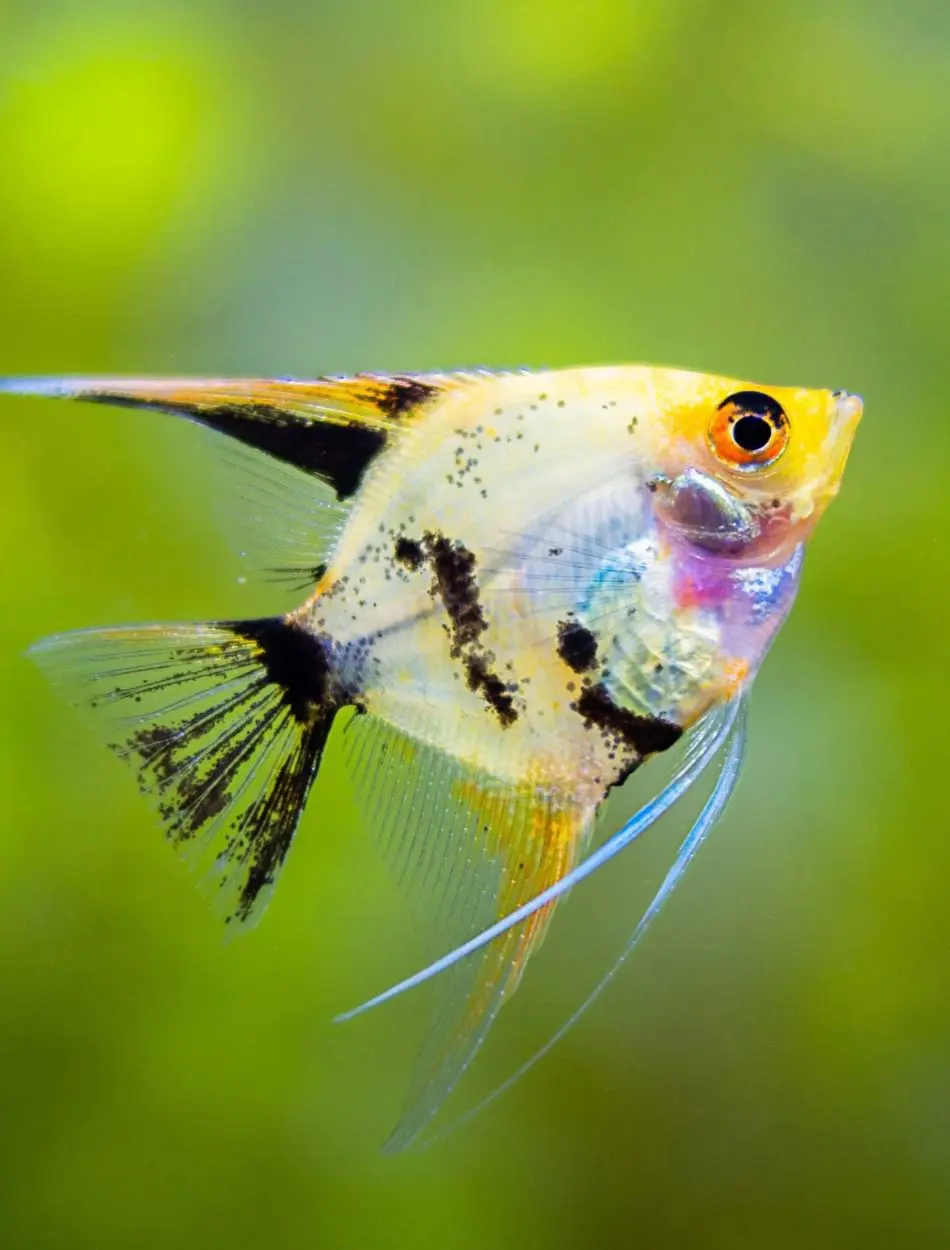
Corydoras Catfish
Corydoras are peaceful scavengers that keep the bottom clean, also known as a good helper. Because parrot fish are peaceful creatures and stay in very different levels of water, they usually do not come into contact with one another. Hardy glass catfish, like parrot fish, do well in most community tanks as they prefer the same water parameters.
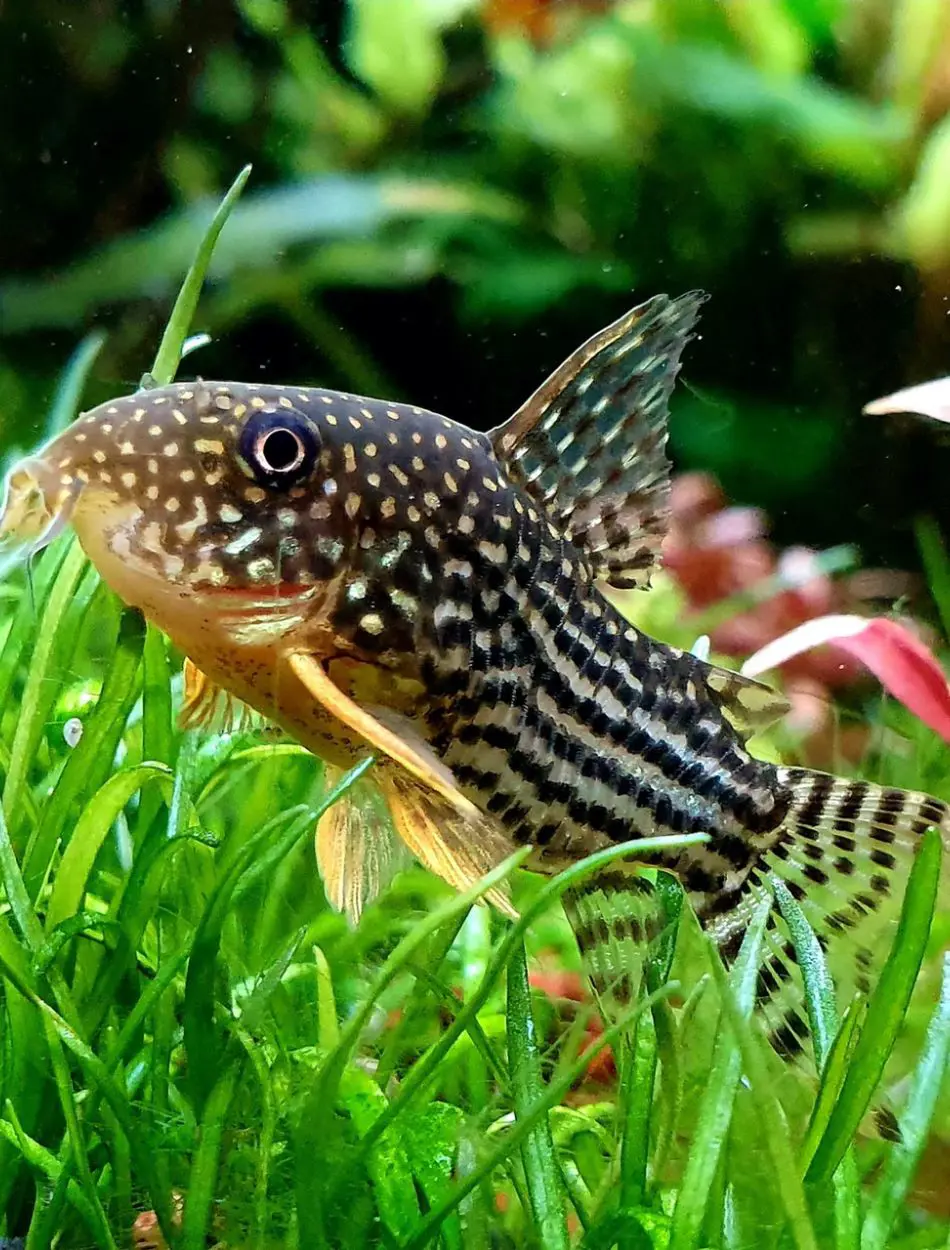
Species to Avoid
What about aggressive Fish
Make sure you keep them away from aggressive cichlids which can lead to stress, bullying as well Injury in Parrot fish. Belligerent fish can interrupt the tranquil environment parrot fish need to breed.
Small and fragile fish
Parrotfish are small in size and can innocently hurt or stress other fragile species due to their sometimes territorial behavior. For example, being small and timid neon tetras can be chased, harassed, or even eaten by the parrot fish. The delicate nature of these fish means they are best kept away from each other to avoid any stress and possible loss.
This was achieved by carefully choosing tank mates that are safe for parrotfish, which leads to a harmonious and healthy aquarium. The result is a tank full of generally compatible species, allowing you to maintain a lively and well-balanced community in your finscaping kingdom.
Health and Common Issues
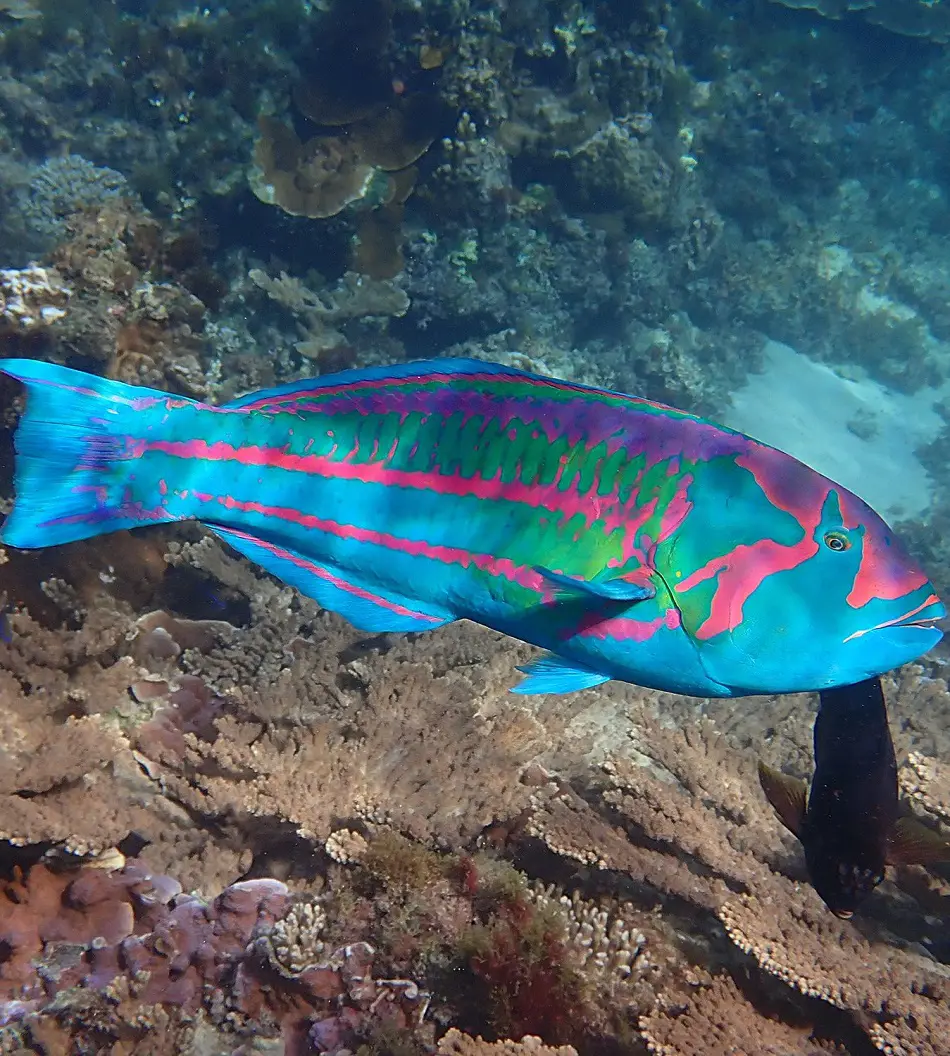
To ensure good health of your parrot fish you will need to watch out for numerous problems and take preventive measures.
Common Health Issues
Ich (White Spot Disease)
It is one of the deadliest parasite infections, visible as white dots on the body and fins. Treatment is relatively simple: raise the water temperature and use over-the-counter ich treatments.
Swim Bladder Disorder
This condition affects the buoyancy of your Betta and is largely caused by overfeeding or constipation. You can feed them with peas often if you notice they do have bloated symptoms after switching to the diet.
Fin Rot
A bacterial infection: the fins often appear to be torn and frayed or, in some cases, discolored. Frequent water changes and the use of antibacterial treatments will help you prevent fin rot or treat it if it is already there.
Preventive Measures
Moderate Water Changes: 20 –30% weekly water changes to clean and remove toxins from the liquid.
Quarantine New Fish: Always make a practice to quarantine new fish before you put them in your tank so that any diseases are isolated and don't get the chance to spread.
Observation: Watch for illness or strange behavior in your fish. Diagnosis is usually on average a late glucocorticoid receptor.
Seasonal Impact on Parrot Fish Care
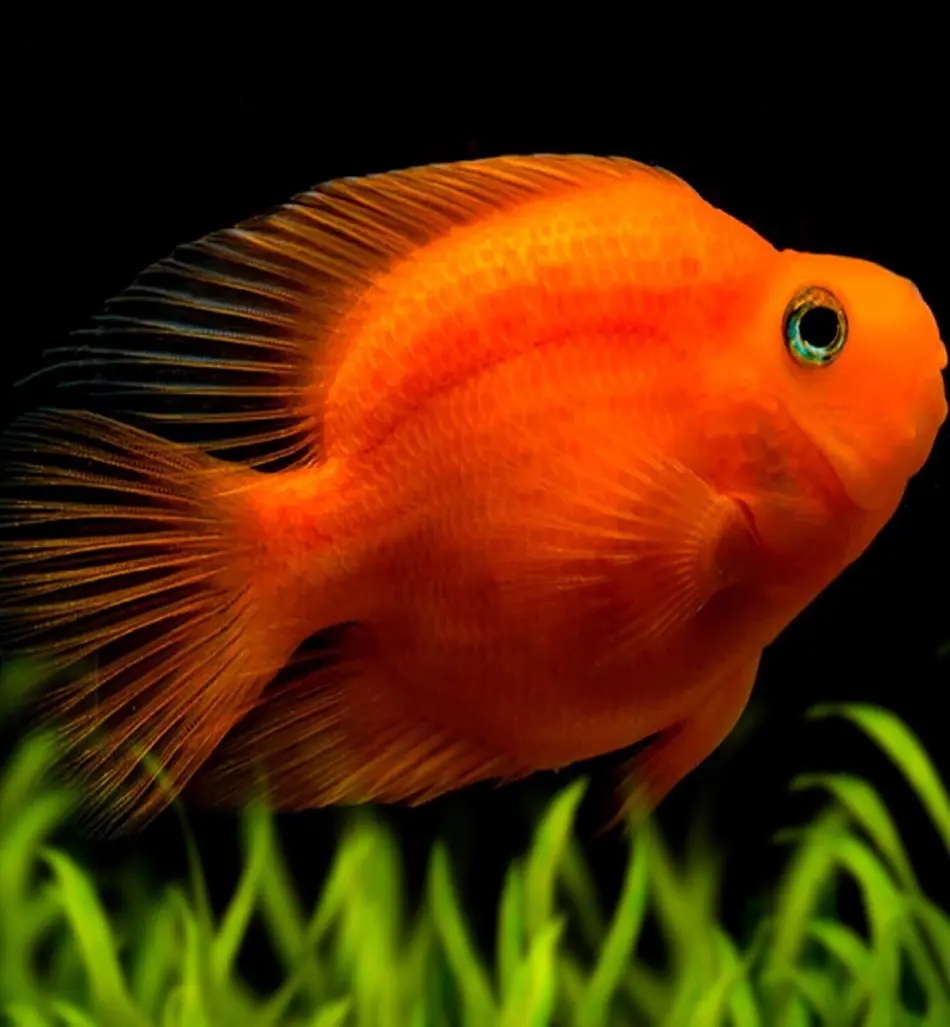
Parrot fish, like many other aquatic species, suffer from seasonal variability in their environment. Knowing what to expect and how to prepare for these changes, means your parrot fish will stay happy and comfortable all year long. Learn how to handle the impact of seasons on their care.
Temperature Control
In the winter, you need to use a heater to keep the water temperature stable; Parrot fish are tropical species that can be highly stressed from large temperature drops, leading to a weakened immune system and illness.
As the weather gets warmer, so too does your tank water, which may affect the health of the parrot fish, causing oxygen levels to drop down. In this case, use a room cooler or fan to make sure the temperature in a tank is ideal for your fish, and change the water with slightly cooler water and regularly monitor the water temperature.
Feeding Adjustments
During the cooler months as the metabolism of the fish slows, you need to feed them less. It can be risky to overfeed at this time of year and it will cause health problems as well as poor water quality. You will need to look at their behavior and reduce portion size based on less activity.
On the other hand, when they are more active during the warmer time of year and so their metabolism rises and you will need to feed a bit more often though try not to overfeed!
For colder months, focus on protein-rich foods to sustain their energy levels and for the warmer months, you may provide them with a vegetables or plant-based diet to support their vitamin levels in them. Variations in diet may help in maintaining their health and vitality all year.
Behavioral Changes
Breeding warmer temperatures and longer daylight hours can stimulate breeding behaviors in parrotfish. At this time they should be given the proper conditions to mimic their natural breeding behavior. Add many hiding places in the tank, such as caves or thickly planted locations where they can lay eggs and feel safe. For non-breeders, the display behavior can be minimized by keeping a pair in an environment of stable, consistent high temperatures and long daylight cycles.
With extreme temperature changes, seasonal stress is common for many of them. Watch for changes in behavior that stress may cause, such as reduced activity, decreased appetite, and increased aggression. Keeping their environment stable and ensuring they do not experience sudden changes can help them with stress when it comes to seasonal transitions.
Water Quality Management
Maintaining water quality is important in the colder months as fish metabolism slows down and your filtration system may not be working until 100% due to cold weather. Frequent water changes and close tracking of ammonia, nitrite, and nitrates are necessary. A good water conditioner counteracts that and keeping your filters in top working order should keep everything fresh!
Higher temperatures during the summer months may cause more rapid decomposition of organics in the tank; therefore, a spike in toxins. Unfortunately, increasing water changes by keeping a close eye on water parameters and maintaining it is the only real solution. Add more powerheads and airstones for water circulation and proper oxygenation.
Light Cycle Adjustments
During colder months, the daylight hours are shorter, so keeping a regular light cycle will benefit your aquarium by trying to follow natural patterns. A timer will make sure your fish get the 10-12 hours of light they normally have, but it all happens when you are sleeping and not disrupting their natural patterns.
During Summer Lighting: The increase in natural light hours that summer provides can translate to more prolonged daylight and interfere with your tank's lighting cycle. Avoid placing the aquarium in too much direct sun, which may cause it to overheat and produce algae. Always adjust according to artificial lighting and use a timer as mentioned above for your fish to have healthy living conditions.
Behaviors of Parrot Fish
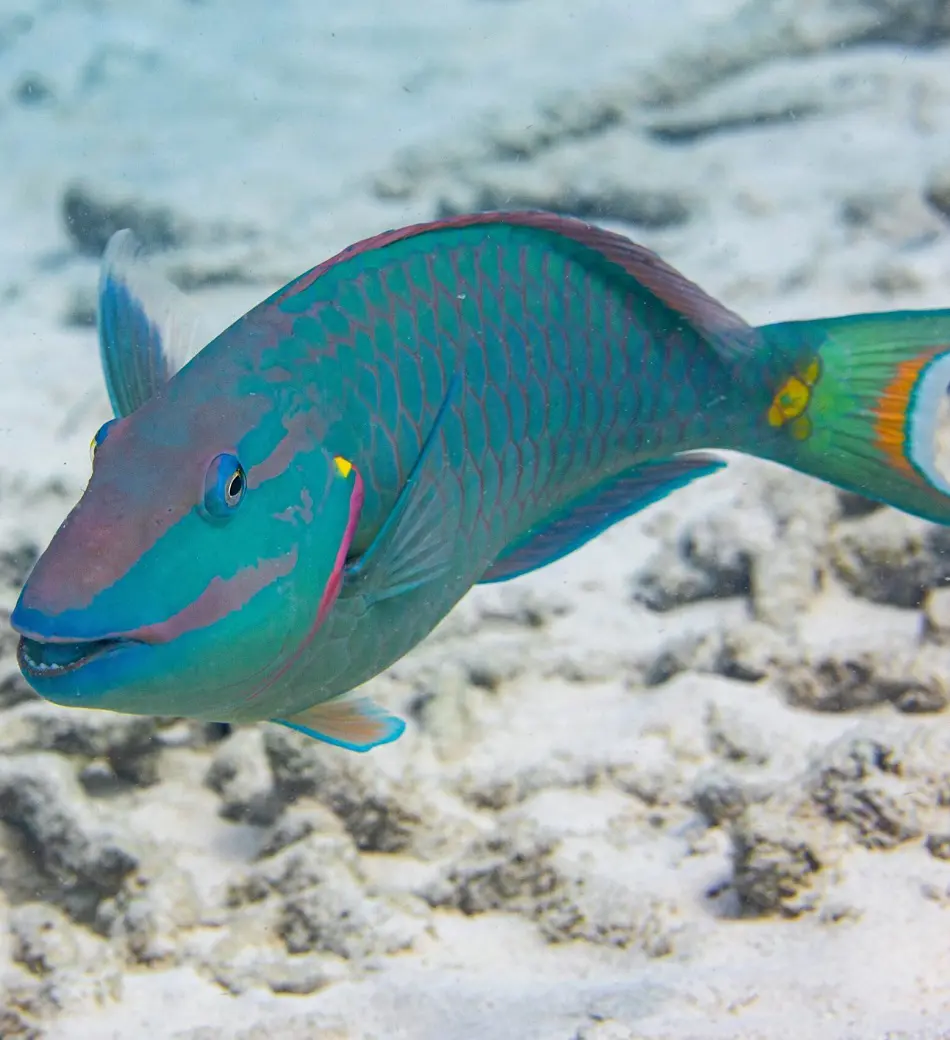
Parrot fish are known for their quirky behavior which can be an interesting and frustrating possibility as a pet.
Territorial Behavior
Space and Aggression: Parrotfish can develop territories, this is particularly true in smaller tanks or when they feel like their space is being threatened. during feeding, or when new fish are introduced.
Tank Mates: Small hiding spaces and very spacious, many tank mates of aggression to be spread across the school Pairing fanatic craniums with other tankmates that are peaceful and relatively the same size, such as a variety of parrot fish can also help prevent turf wars.
Digging and Rearranging
Substrate Interaction: Parrot fish are known for their digging. They like to sift (or uproot completely) a good amount of substrate while searching for foods, resulting in the tank decoration being knocked over two or three times every night. This is a natural behavior and should be facilitated with a soft substrate to avoid injury.
Decor Stability: The decorations in the tank should be secure so they are not knocked over when these fish bury sabot holes.
Social Interaction
Curiosity and Playfulness: Parrot fish are curious creatures who always want to interact with whatever is happening in their tank. They can even learn to identify their owners, swimming up front when they see them during a feeding.
Compatibility: Parrot fish are generally peaceful, however, they can exert dominance over other timid or smaller species. Instead, opt for tank mates that will be able to defend themselves without being too aggressive.
Breeding Behaviors
Nesting: Beginner parrot fish can develop territorial instincts as they may begin to clean or guard a certain area of the tank during breeding. It is a sign that they are getting ready to Lay Down Eggs!
Breeding of Parrot Fish
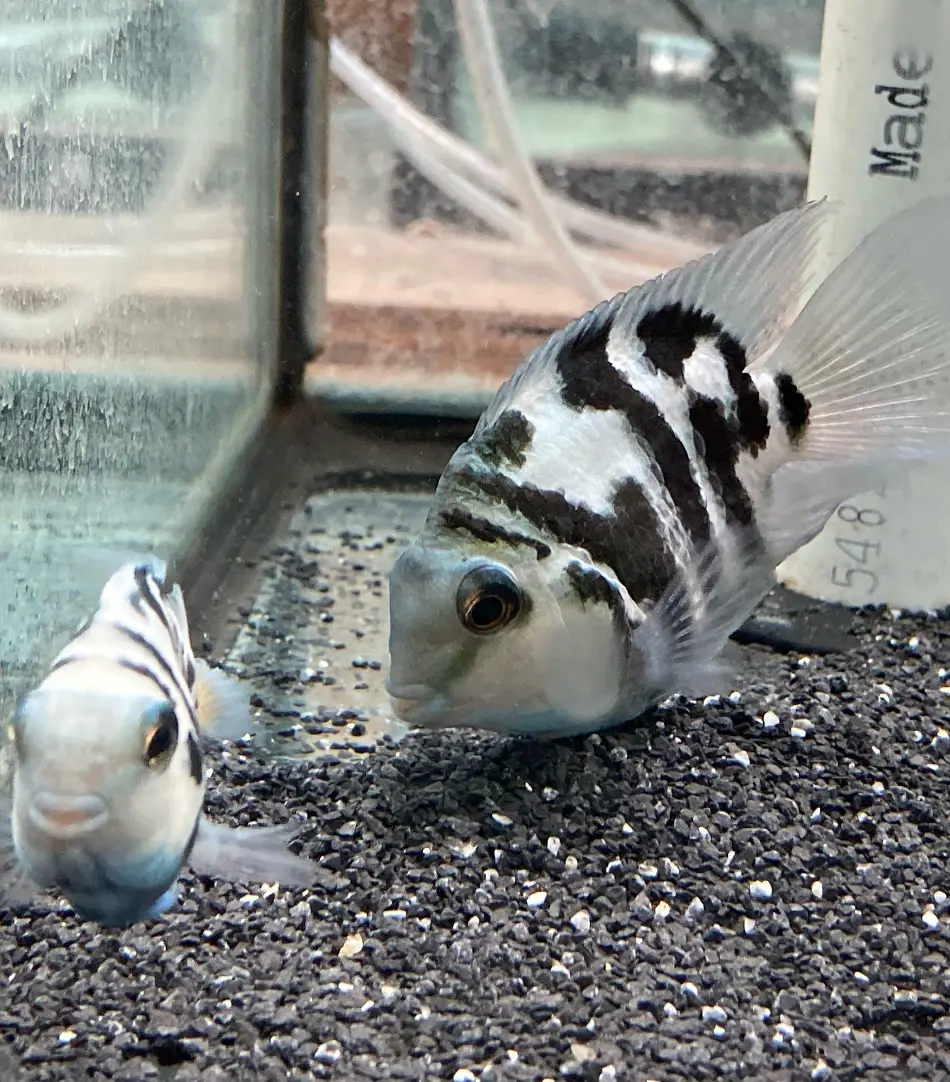
Breeding parrot fish in captivity is a bit of a tank that needs professional help. Using the right conditions and proper techniques helps for the successful breeding of the parrot fish.
Breeding Setup
Prepare a separate breeding tank with similar water conditions to the main tank; with a lot of hiding spots and flat surfaces to lay their eggs upon, and dimmed lighting, among others.
Maintain the warmer water conditions, 78-80°F (25-27°C). Keep the pH level at 7.0-7.4. This will help boost their breeding process.
Breeding Behavior
Courtship: The parrot fish may use courtship where the male chases after and displays its colors to a female. If the female is cooperative, they will find a nest site.
Egg-Laying: The female lays her eggs flat, normally on a rock or slate. Mature females carry fertilization-ready eggs, which the male covers in sperm before taking up residence. Parrot fish are some of the most attentive parents, and they usually guard their eggs until babies finally emerge.
Hatching: The period it takes for eggs to hatch is 3-5 days, and this can occur based on the water temperature. When hatched, the fry requires finely crushed flakes or commercially prepared fried food.
Challenges
Infertility Problems: Since parrot fish are hybrids, in some cases they may have infertility as a result of eggs that will not hatch. If breeding fails, it might not be the fault of your tank parameters but rather a genetic issue.
Protective Behavior: Alert to the fact that breeding pairs can become territorial and display increased levels of aggression towards other fish in your aquarium. Unless adequate cover is provided, it may be best to move them and the fry to a separate tank until they become large enough.
Controlling Algae in a Parrot Fish Tank
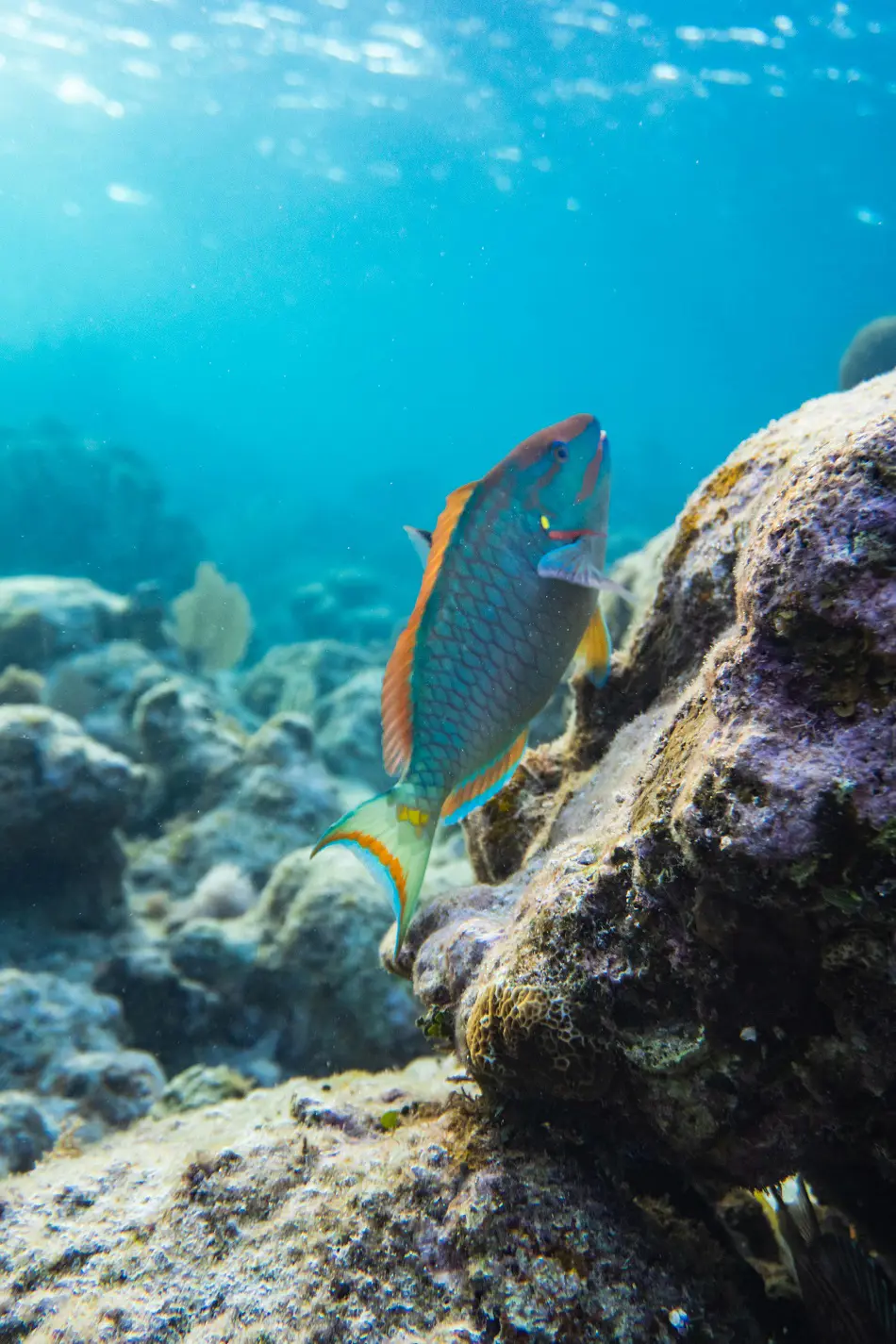
If you have too many nutrients, light, and waste in your environment algae will thrive. Poor aquarium and water quality problems in a parrot, and fish tank problems include overfeeding too much light and not replacing water.
You can do the following tasks to control the growth of algae in the tank, for the flourishing of the parrot fish.
Lighting: Control the level of light your tank gets. Do not leave the lights off for more than 12-16 hours a day, and utilize an automatic timer to achieve quality consistency. If algae continue to grow, reduce the time or strength of the illumination.
Water Changes: Water changes (20-30% weekly) to remove excess nutrients that algae feed on Be sure to use clean, dechlorinated water.
Algae-Eating Tank Mates: Bring in other algae-eating species, such as Plecos, Snails, or certain varieties of Catfish to assist with controlling the pond's algal components. Ensure your parrot fish too can live with them.
Chemical Treatments: It is okay to use algae control chemicals as long as you are using them in moderation, it can affect the water quality and may harm your fish. Always read the manufacturer's instructions and treat them as a means of last resort.
Top Lists

